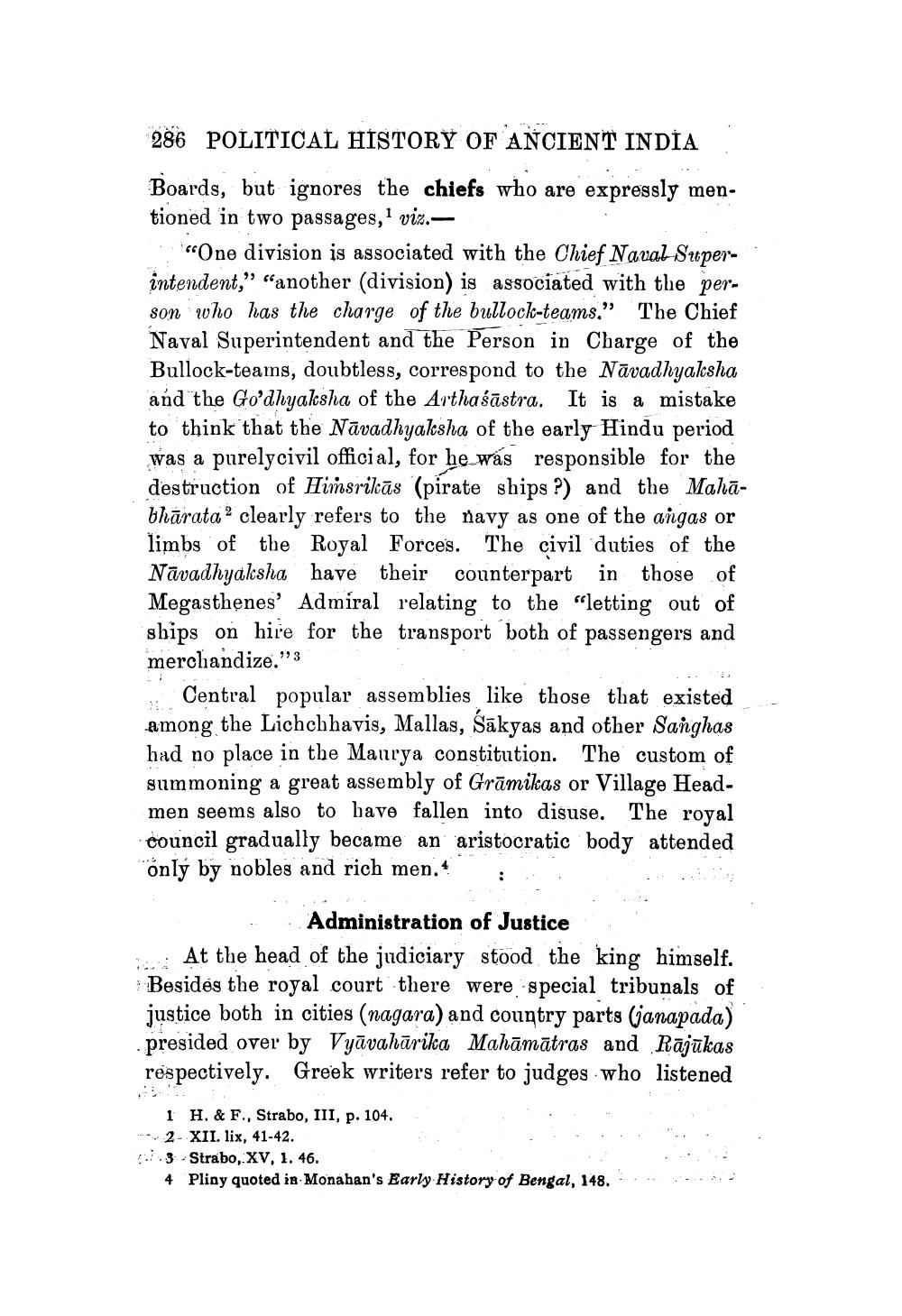________________
286 POLITICAL HISTORY OF ANCIENT INDİA Boards, but ignores the chiefs who are expressly mentioned in two passages, viz.
"One division is associated with the Chief Naval Superintendent," "another (division) is associated with the person who has the charge of the bullock-teams." The Chief Naval Superintendent and the Person in Charge of the Bullock-teams, doubtless, correspond to the Nāvadhyaksha and the Go'dhyaksha of the Arthaśāstra. It is a mistake to think that the Nāvadhyaksha of the early Hindu period was a purelycivil official, for he was responsible for the destruction of Himsrikās (pirate ships ?) and the Mahabhārata2 clearly refers to the navy as one of the angas or limbs of the Royal Forces. The civil duties of the Navadhyaksha have their counterpart in those of Megasthenes’ Admiral relating to the “letting out of ships on hire for the transport both of passengers and merchandize.''3
Central popular assemblies like those that existed among the Lichchhavis, Mallas, Sākyas and other Sanghas had no place in the Maurya constitution. The custom of summoning a great assembly of Grāmikas or Village Headmen seems also to have fallen into disuse. The royal council gradually became an aristocratic body attended only by nobles and rich men.
... Administration of Justice At the head of the judiciary stood the king himself. Besides the royal court there were special tribunals of justice both in cities (nagara) and country parts (janapada) presided over by Vyāvahārika Mahāmātras and Rājūkas respectively. Greek writers refer to judges who listened
1 H. & F., Strabo, III, p. 104.
2- XII. lix, 41-42. 1.3 Strabo, XV, 1. 46.
4 Pliny quoted in Monahan's Early History of Bengal, 148....




